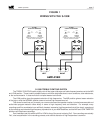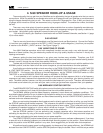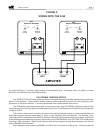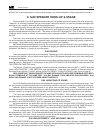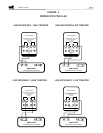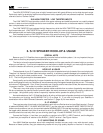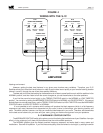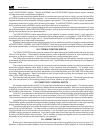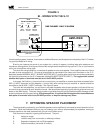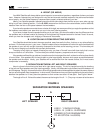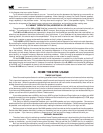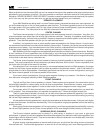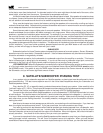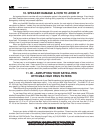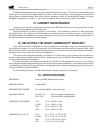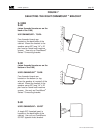
satellite speakers
page 16
Meter (available for less than about $40) and use it to measure the output of the speakers when playing the test tones
generated by your processor or receiver. See your processor or receiver's instruction manual for how to perform the
calibration. NEVER CALIBRATE LEVELS BY EAR! This meter is a small investment relative to the price of your system,
and it is the only way that you can make sure you get the maximum benefit from your investment.
SPEAKER PLACEMENT
If your M&K Satellites are being used in a Home Theatre system, placement becomes even more important, as
you will be balancing four or five (or more) speakers rather than two. The following guidelines are for a five-channel
Pro-Logic system, but if your system is not Pro-Logic (does not have a Center channel speaker), ignore the references
to the Center channel. The instructions for the other four channels will still be correct.
CENTER CHANNEL
The Center channel speaker in a Pro-Logic system is the most important channel in the system. Very often, this
channel produces more output than the left and right channels
combined
. Therefore, this speaker should be of the
highest possible quality, and as similar as possible in frequency response and radiation pattern to the Left and Right
speakers. Three identical speakers will give you the most accurate sound.
In addition, it is important to have as much amplifier power as possible for the Center channel. As a minimum,
we recommend that the three front channels be identical in power output. Preferably, the Center channel will have the
greatest amount of power. If you have less power in the Center channel, understand that this will be the limiting factor
in the total output capability of the system when watching and listening to video sources.
M&K Satellites, with their compact size and adjustable tonal balances, are ideal for Center channel use. Because
of their Variations of Sound capabilities, they will blend with a very wide range of speakers and can be acoustically
balanced to provide a smooth front channel soundfield. M&K Satellites are also offered with optional magnetic shielding
to allow them to be used close to a television set.
The Center channel speaker should be located as close as physically possible to the television or projection
screen. This usually means that it will be just above or just below the screen, which is ideal. If that is not possible, then
just to the left or the right of the screen is next best.
If the television is not in the center of the room (or not centered between the Left and Right speakers), the proper
location for the Center channel speaker is still as close as possible to the television screen -- even if that means it is
outside either the Left or Right speaker. Remarkably good results can be found in unusual configurations, as long as
the Center channel speaker is as close as possible to the screen.
If you have a direct-view television, this may make magnetic shielding very important. See Section 2 (page 3)
for a discussion of magnetic shielding in M&K Satellite speakers.
FRONT CHANNELS
The Left and Right front channel speakers in a Home Theatre system can be placed in the same fashion as the
Left and Right speakers in a stereo setup, and this is what we recommend. Some listeners, however, may prefer the
Left and Right speakers closer together in order to better match the sonic image and screen image sizes.
For example, with a 20" direct-view television, you would want the speakers closer together than you would with
a 100" projector. One recommendation is to separate the speakers by 1.5 times the diagonal screen size.
There is a great deal of latitude in this area, as it is really one of personal preference (especially if you use the
system to listen to music without video). If you find a sonic image much wider than your screen disconcerting, try moving
the Left and Right speakers closer together.
It is also preferred that the speakers be in roughly the same plane as the television screen. If they are much higher
or lower than the screen, the effect can be distracting. If this is not practical, angling the speakers to aim at the listening
position can help.
When using a Center channel speaker in a Pro-Logic system, you will have a great deal of extra flexibility in placing
the Left and Right speakers, as the Center channel speaker will tie most dialog and effects directly to the screen.
SURROUND (REAR) CHANNELS
The Surround channel speakers can be placed in a wide variety of locations in your room to give good
performance. In general, the surround speakers should be either adjacent to or behind the main listening position, and
located higher than the listener's heads. They can be mounted on either the side walls or on the back wall, flush to the
wall, on shelves, on brackets, etc.
A typical location might be speakers on the side walls of the room, one foot from the ceiling and two or three feet
from the back wall. This would be appropriate in a room with 8 or 9 foot ceilings, and a main listening position three



